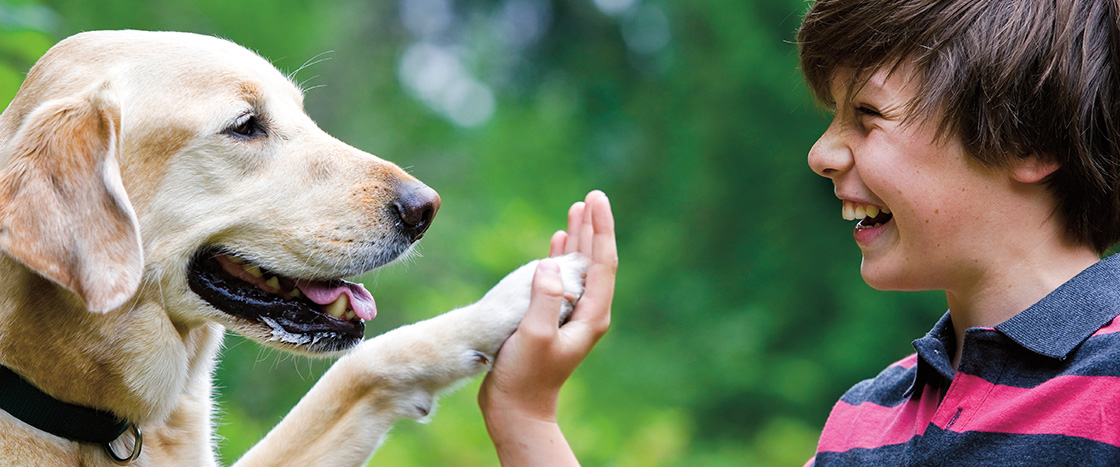You feel something warm and furry nudge your leg at the dinner table. It’s your dog, and he’s gazing up at you. “Give me that pizza!” his expression seems to say. Later you catch him feasting on one of your brand-new Nikes. He drops the shoe and stares at you, his eyebrows raised. He looks like he’s saying, “I’m sorry!”
Even if you’ve never had a pet dog, you’ve probably seen dogs make humanlike expressions. Do dogs make these faces on purpose? And if so, are they using their faces to try to tell us something?
These are the types of questions that Juliane Kaminski thinks about. She’s a scientist who studies dog cognition, or how dogs think and learn.
Dogs pay close attention to humans’ faces, Kaminski says. And scientists have learned that they have a remarkable ability to understand what we mean when we make different facial expressions or use gestures, like pointing. (If you have a dog, you’ve probably noticed!)
A few years ago, Kaminski wondered if dogs might use their faces to try to communicate with their human owners. As a dog owner, she thought it was certainly possible! But as a scientist, she needed evidence to support her ideas.
You’re at the dinner table. Something warm and furry bumps your leg. It’s your dog. He gazes up at you. “Give me that pizza!” his face seems to say. Later you catch him chewing on a shoe. It’s one of your brand-new Nike sneakers. He drops the shoe. He stares at you with his eyebrows raised. “I’m sorry!” it looks like he’s saying.
You may have never had a pet dog. But you’ve probably seen dogs make humanlike expressions. Do dogs make these faces on purpose? And if so, is it to tell us something?
Juliane Kaminski thinks about these types of questions. She’s a scientist. She studies dog cognition. That means how dogs think and learn.
Dogs watch humans’ faces closely, says Kaminski. And scientists have learned that dogs have an amazing ability. They know what different human expressions mean. The same is true for human gestures, like pointing. (You’ve probably noticed if you have a dog!)
Kaminski wondered something a few years ago. What if dogs use their faces too? And what if they’re using them to tell humans something? As a dog owner, Kaminski thought it was possible! But as a scientist, she needed evidence to support her ideas.

